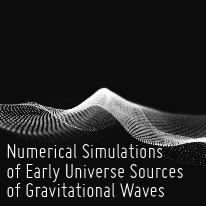Speaker
Description
Cosmic inflation is the leading paradigm for describing the early universe, addressing fundamental issues such as the horizon and flatness problems. However, a key unresolved question is the nature of its initial conditions. In this talk, I will explore how numerical relativity helps study inflationary spacetimes with inhomogeneous initial conditions, particularly in the presence of strong gravitational effects from large inhomogeneities. Full numerical simulations allow us to map out the phase space of initial conditions that lead to sufficient duration of slow roll inflation versus those that do not. The results strongly depend on the inflationary model, with a rule of thumb that the models with near- or super-Planckian characteristic scales are more robust to matter and geometric inhomogeneities than those with sub-Planckian scales. We mainly focus on the study of α-attractor models and our simulation results allow us to establish a lower bound on the tensor-to-scalar ratio r.

